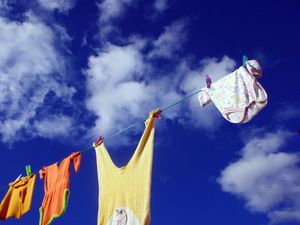
I started looking for natural homemade laundry powder recipes at the beginning of this year, when I decided to overhaul the cleaning agents we use at home, from floor to ceiling, toilet bowls to windows, head to toe of human beings big and little.
Tried a couple of recipes that I found, and settled on this super simple DIY laundry soap powder that I’m going to share in this post.
Why DIY? What’s wrong with commercial products?
If you’re walking around in your freshly laundered clothes feeling all clean and fresh, then you have fallen for the trap that manufacturers of commercial laundry detergents would have you in. If you think you smell of lemon, or pineapple, or flowers, or a fresh breeze, then your skin is in fact exposed to toxic fragrances everyday.
Commercial laundry detergents, more often than not, contain harmful chemicals with negative effects of varying severity, from skin irritation and respiratory issues to carcinogenic risks and neurological disorders. Some people may say these are present in such minute quantities that their effects on our health is close to nothing.
But I believe they do add up, and they’re everywhere, not just in laundry detergents. They’re in every household cleaning product from floor and wooden furniture to bathroom and kitchen cleaners. Everywhere we sit or step on at home has chemicals, the air we breath in contain toxic fumes from these chemicals.
Many commercial personal care products also contain harmful substances, which we lather on from head to toe every single day. It’s no wonder chronic illnesses are on the rise, and more people are suffering from conditions that our ancestors from centuries ago had not heard of before.
For the sake of my two eczema warriors, I was determined to give them a fresh and clean start this year. Not just in terms of their diet, but also all the other environmental irritants that they come in contact with on a daily basis. Eczema is a condition that for many sufferers, is too complicated to pinpoint one isolated cause. Usually it’s an intricate combination of so many factors. We can only do our best and try to remove whatever allergens in their lives that we can control, so we give their bodies the best chance to build up their immunity and fend for themselves.
My apologies, I guess that’s enough ranting for the day. Let’s get down to serious work.
The Toxic Culprits in Laundry Detergent
The toxic chemicals found in laundry detergent and laundry powder are endless. I was quite shocked and disturbed by the long list of ingredients, all synthetic, that make up what we soak our clothes in everyday. Just take a look at Tide, a very common brand. The ingredients in its laundry detergent are:
Water, sodium alcohol ethoxylate sulfate, linear alkylbenzene sulfonate sodium salt, citric acid mea salt, propylene glycol, diethylene glycol, polyethyleneimine ethoxylate, alcohol, polyethyleneimine ethoxylate propoxylate, borax, sodium alcohol sulfate, lauramine oxide, fragrance, lauric acid sodium salt, sodium cumeme sulfonate, citric acid sodium salt, dtpa sodium salt, myristic acid sodium salt, fluorescent brightener, poly siloxanes, hydrogenated castor oil, calcium diformate, palmitic acid sodium salt, sodium formate, oleic acid sodium salt, protease, stearic acid sodium salt, dimethicone & simethicone, amylase, sodium hydroxide, liquitint dye®, ethyl hexyl stearate, mannanase, siloxanes & silicones.
I don’t know about you, but I was quite appalled to see this list.
I thought, okay, maybe laundry powder would have a simpler formulation, but I was so wrong. Here is the ingredient list for Tide powder detergent:
Sodium carbonate, sodium sulfate, sodium aluminosilicate, linear alkylbenzene sulfonate, sodium percarbonate, sodium laureth sulfate, sodium polyacrylate, water, silicate, nonanoyloxy benzenesulfonate, fragrance, palmitic acid, polyethylene glycol 4000, disodium diaminostilbene disulfonate, silicone, protease, amylase, lipase, fd&c blue #1 (colouring).
Hello? What has the world become? This is utterly crazy! Do we really need all these chemicals to clean our clothes?
In 2012, Procter and Gamble made the headlines when concerning levels of a petrochemical called 1,4-dioxane was found in two of its Tide products: Tide Original Scent Liquid Laundry Detergent and Tide Free and Gentle Liquid Laundry Detergent.
1,4-dioxane is used as a solvent, and is listed by EPA (Environment Protection Agency) as a human carcinogen. High levels of inhalation exposure has caused vertigo, drowsiness, headache, anorexia and irritation of the eyes, nose, throat and lungs in humans. It may also irritate the skin. Damage to liver and kidneys has been observed in rats chronically exposed through their drinking water. Tumours have been observed in orally exposed animals.
We wouldn’t be able to find 1,4-dioxane on the ingredients list, as it is a by-product, thus not required to be listed.
Why would anyone expose their skin to this substance everyday?
I used to not pay so much attention to what I put on my skin. But after having two children with severe eczema, now I know enough to set the high standard of: what you wouldn’t put into your mouth, don’t put on your skin. Yes, it gets to this extent. Because our skin is our largest organ, and it is permeable to many substances. What goes through our skin goes straight into the bloodstream and to the rest of the body. If you can smell the fragrance in your freshly laundered clothes, I would think there are remnants of all the chemicals on your clothes.
Besides the hidden 1,4-dioxane, the usual suspects are all there: SLS and fragrances. I can’t even be bothered to look up all the other chemicals. I hope the verdict is equally obvious to you.
Gathering the Ingredients
So it looks like we have to manufacture our own laundry cleaner! You don’t need a witch’s cauldron for this, it is too simple. You just need some plastic container (for storing your homemade laundry powder), a grater, and a stirrer (I use a spoon) to mix, mix, mix.
What I make is a laundry soap powder. Ready for my ingredients list?
- Dr Bronner bar soap
- Washing soda
- Baking soda
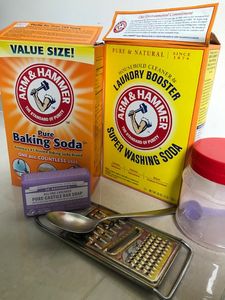
I guess you can use any brand of bar soap, but Dr Bronner’s is my absolute favourite, because of their all-natural plant-based products, as well as their philosophy. They’re such a rare gem in today’s world.
As for fabric softener, here is the ‘list’:
- Vinegar (you can use white vinegar or apple cider vinegar, it’s up to your own preference)
Simple Equals Sustainable
Once you get the ingredients all ready, simply grate up the bar soap finely, and mix it with 1 cup of washing soda and 1 cup of baking soda. Whoala! You’re all ready to go! Use about 2 to 3 tablespoons per laundry load.
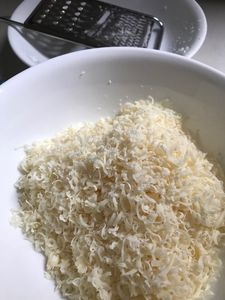
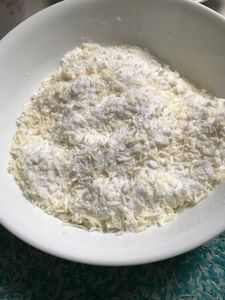
As for the fabric softener, add the vinegar straight into the fabric softener compartment of your washer.
I like it simple, simple is good.
So far I have used this DIY laundry soap powder without experiencing any problem or cleaning issues with my washer, but I must say the water we have here is quite soft.
If the area you live in has hard water, you may want to clean out your washer once every few months, to prevent buildup of soap scum. This can be done very simply by adding some vinegar into a hot water cycle (without any laundry load) and run it.
Wear your clothes naturally cleaned
I personally like to use Dr Bronner’s lavender scented bar soap. Don’t worry, their soaps are scented using natural extracts from the plants, not with fragrances made from toxic chemicals. You can also choose from unscented baby-mild, peppermint, almond, tea tree, eucalyptus, rose and citrus.
And don’t worry about your clothes smelling like they have been pickled due to the vinegar softener. The smell totally disappears after the clothes dry off. I even use it in my hair, as a conditioner. Surely I wouldn’t want people to think I’m a walking pickle, so trust me, the smell does not linger at all after drying off.
I simply love the feeling of knowing that my family has their clothes naturally cleaned, and that my children are protected from the nonsense that are in so many commercial cleaning products these days.
Back to basics, anytime.
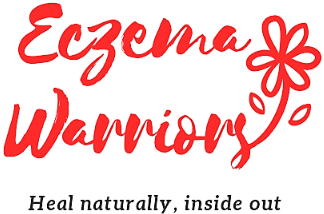
Wow, my wife has been hammering me about his for a long time. Now i understand fully why! You brought out some great tips. I’ll talk to the wife and try out this recipe for laundry soap. Thanks!
Hi Bruce,
Yes do try it out. You will be so pleased at how chemical-free it is. And the clothes are equally clean and fresh!
Wow, I did not know that! I am really health minded and try to do everything to avoid toxins by eating healthy and using natural products on my skin, not knowing that my clothes are carrying so many toxins. Thank you so much for this interesting information! I will definitely try this at home. Peace and Love to you and keep up the nice posts. I really like them!
Hi Mathieu,
Thank you for your kind words, they’re an encouragement to me.
Yeah what comes into contact with our skin is equally important as what we eat. Peace and love to you too!
Oh wow!
That is a great value in this post!
I have been using your dishwasher soap for a while now and laundry soap will be my next to make!
I like that it is so simple to make, will save you a lot of money and you will not be exposed to all the chemicals from the commercial products! I do not believe I can get the soap you recommend here in Canada for a reasonable price, but I will look for options around here!
Thank you for the post!
Hi Anna,
I’m glad that you found this useful. In fact, any soap will do, but of course you want to make sure it is all natural by carefully reading the ingredients list, and not merely accepting any label that states ‘natural’.
Wow! What a wonderful article. I read that you only need to use 2 to 3 spoonfuls of the homemade detergent! That’s amazing. Not only is it nontoxic, but only using that amount-it should be less expensive as well. I am going to try this for sure.
Hi Cristy,
Yeah, using this DIY laundry soap powder and vinegar as fabric softener certainly is cheaper than the commercial laundry detergents and fabric softeners bought off the shelves! Using the recipe described here, each batch can last my family of 6 people close to a month!
I had no idea, nor did I ever think about what laundry soap could do to our skin. It is a very interesting article and it seems easy enough to make, so I think I might give it a try. Thanks for opening my eyes a bit.
Hi Marla,
Yes it really is that easy to make the DIY laundry soap powder! Do give it a try, you may be hooked on it, knowing how chemical-free and gentle on your skin it is.